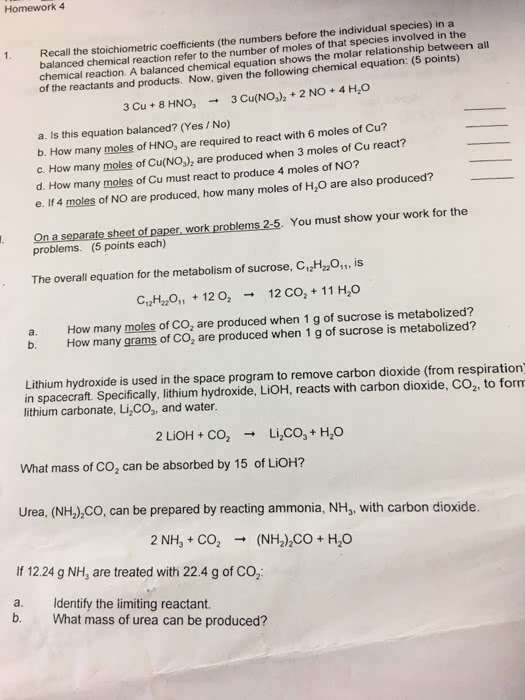CHEM 1031 Lecture Notes - Lecture 8: Molar Mass, Limiting Reagent, Ammonia
49 views4 pages
30 Oct 2017
School
Department
Course
Professor
Document Summary
If a is a(cid:374) (cid:862)lr(cid:863), the(cid:374) b is i(cid:374) e(cid:454)(cid:272)ess (cid:862)inx (cid:863: ex. 2 c4h10 + 13 o2 > 8 co2 + 10 h2o. Nh3: grams n2 (31. 5) x 1 mole n2/ 28. 02 n2 x 2 moles nh3/ 1 mole n2 = 2. 25 mol. Nh3: lr: h2, inxs: n2, maximum yield = 1. 77 mole nh3 x 17. 03 g nh3/ 1 mol = 29. 3 g nh2. In most chemical reactions, the theoretical yield does not equal the actual yield. You always produce fewer grams of product than predicted. Due to impurities, some product being washed away when purified, or there could be side reactions occurring: % yield = actual (experimental) yield/ theoretical (maximum) yield x 100, ex. In previous example, the actual yield was 25. 2 g nh3, so percent yield will be actual yield (25. 2 g) divided by the theoretical yield (29. 3 g nh3) x 100= 86. 0% (pretty good: ex.
Get access
Grade+20% off
$8 USD/m$10 USD/m
Billed $96 USD annually

Homework Help
Study Guides
Textbook Solutions
Class Notes
Textbook Notes
Booster Class
40 Verified Answers
Class+
$8 USD/m
Billed $96 USD annually

Homework Help
Study Guides
Textbook Solutions
Class Notes
Textbook Notes
Booster Class
30 Verified Answers
Related textbook solutions
Chemistry: Structure and Properties
2 Edition,
Tro
ISBN: 9780134293936
Basic Chemistry
5 Edition,
Timberlake
ISBN: 9780134138046
Principles of Chemistry Molecular Approach
4th Edition,
Tro
ISBN: 9780134112831
Chemistry: Structure and Properties
2nd Edition,
Tro
ISBN: 9780134293936
Principles of Chemistry Molecular Approach
3rd Edition, 2014
Tro
ISBN: 9780321971944
Chemistry: A Molecular Approach
3rd Edition,
Tro
ISBN: 9780321809247
Chemistry: A Molecular Approach
5th Edition,
Tro
ISBN: 9780134874371
Principles of Chemistry: A Molecular Approach
4th Edition,
Tro
ISBN: 9780134895741
Chemistry: The Central Science
14th Edition, 2017
Brown
ISBN: 9780134414232
